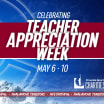Around North America: Pittsburgh
Follow the Avalanche's travels via: Around North America by Altitude Radio Play-By-Play Conor McGahey

"The arsenal of democracy."
Pittsburgh's nickname after it churned out 95 million tons of steel for the American war effort during World War II.
Most roads (or in this city's case rivers) lead to steel as the roots of The Allegheny Mountains' largest city. While this is true for a large portion of Pittsburgh's history dating all the way back to The War of 1812, it wasn't what first drew Europeans to the now famous City of Bridges.
"Trois rivières." French for "three rivers".
Way before French explorers Robert de La Salle and Martin Chartier took their expedition to the Ohio to see the Monongahela and Allegheny Rivers form it's confluence, the Shawnee mostly inhabited what would become a focal point of the Seven Years' War (French and Indian War) between Britain and France. The British and French would take turns building structures that would lay claim to a vital piece of the wilderness, with high cliffs overlooking crucial water routes to be used for supply and travel. Britain built Fort Prince George first, driven off by a superior French force who constructed the more permanent Fort Duquesne, citing LaSalle's 1669 claim that what would soon be Fort Pitt, belonged to France.
Enter, George Washington. Yes, the Father of the American Revolution, the first President of the United States, and once a major in the British army and aid to General Edward Braddock. Braddock and Washington were sent to take Fort Duquesne from the French. Washington's wasn't the only name that would one day be famous in America. Lieutenant Thomas Gage led Braddock's advanced guard. Gage would eventually be the commander-in-chief of the British forces in America 20 years later during the early days of the Revolution. Daniel Boone was a member of a North Carolina militia unit in Braddock's force. Boone would turn into the face of the American frontier. His cousin, Daniel Morgan, was a wagoner at the Battle of the Monongahela and would be a key general for the Americans against Gage and the British years later under General George Washington.
Braddock, Washington and the British lost the "Battle of Braddock's Field" on July 9, 1755. Three years later, General John Forbes finally reclaimed the "trios rivières" and began construction on Fort Pitt, named after William Pitt the Elder, leader of the British cabinet during the Seven Years' War and after two years as prime minister was known for his pro-colonial stance when it came to America. Pittsburgh as we know it today, was taking shape.
As the American Revolution was fought and won by the colonies, Pittsburgh (when named by the Scotsman John Forbes was pronounced like Edinburgh) had lived up to its bidding as a transportation hub, with an early popular trade being the construction of boats. And the rough-and-tumble frontier types that helped win many-a guerrilla battle to help defeat the British, stuck tightly to the causes that they fought for.
In 1794, during Washington's presidency, citizens all along the then American frontier resisted a tax levied on distilled spirits in America designed to recoup huge losses incurred financially by Congress during the war. With the evaporation of US based rum distilling after the war, the tax fell mainly on the increasingly popular to make and perhaps too easy to consume, whiskey. Bugling the battle cry that started it all for America, "No taxation without representation", rural farmers, frontiersmen and the like started the Whiskey Rebellion, with Pittsburgh once again being at the center of the action. President Washington personally led 13,000 troops to quash the rebellion, with little resistance and loss on either side. After a dark period for Washington that included the Quasi War with France and the unpopular Jay Treaty with Great Britain, he gained much acclaim on his handling of the Whiskey Rebellion. He was able to stop an uprising in an infant nation without resorting to the very thing he fought against, tyranny.
The unlikely Western Pennsylvania post of Pittsburgh continued to be the site of some of the extraordinary events in early American history. In 1803, Meriwhether Lewis purchased the keelboat here that the Lewis and Clark Expedition would use to traverse the Missouri River in their endeavor to find the Northwest Passage. The federal government recognizes Pittsburgh as the origin point of the expedition.
Years later, during the War of 1812 fought between America and Great Britain, supplies from the once-upon-a-time Mother Country were cut off. Western Pennsylvania, with Pittsburgh as the figurehead, showed its versatility. The ore-rich Allegheny Mountains for the first time show their potential to help drive American industry. It wasn't just the iron ore hidden in the hills. Brass, tin and glass were added to the city's manufacturing repertoire. From this point on, Pittsburgh showed what it could do to carry a country on its back. During the American Civil War, Pittsburgh was a main hub for the Underground Railroad helping slaves from the South get to freedom either in the North or in Canada. At the same time, its iron production helped fuel the Union army and navy, and eventually victory.
Even before the Civil War, a wave of European immigrants helped prop up Pittsburgh as a titan of industry. The 1830's invited Welsh steelworkers, the 1845 fire brought the city to its knees, but Irish immigrants trying to escape the Great Famine helped it back to its feet. By 1857, there were one thousand factories around the city, many of them worked by German hands.
This brings us to an icon that most people associate with Pittsburgh, the proud Scot, Andrew Carnegie. While his most famous structure is a concert hall in New York, Carnegie started steel production in Pittsburgh in 1875 and in 1901, another titan of American industry, J.P. Morgan, merged Carnegie Steel company with several others to create the juggernaut corporation U.S. Steel. Less than a decade later, Pittsburgh produced almost half of America's steel.
Today, it's not just steel that drives the economy. Actually almost less so than ever. From tech to healthcare, Pittsburgh has turned into quite the center for American business ever since the economical advancement from factory/mill based manual labor in the 1970's and '80's. But there is one thing that brings the city's history, culture, attitude and even colors together; sports.
Once upon a time at the confluence of the Monongahela, Allegheny and Ohio, the aptly named Three Rivers Stadium stood. This iconic venue was home to legends like Terry Bradshaw and Franco Harris, and some of the worst AstroTurf ™️ ever known to man (many say Philadelphia's Veteran's Stadium was the worst). One of the great early dynasties in NFL history, the Steelers, in their iconic black and yellow (more on color schemes in a moment) won back to back Super Bowls ™️ twice in the 1970's. Later replaced by Heinz Field, the home of the Steelers is always one of the most memorable and scenic places to play in the National Football League.
Just a couple of boat lengths up the Monongahela, sits PNC Park, home of the Pittsburgh Pirates. Despite the black and yellow of baseball not having much modern success in Major League Baseball, ask any scribe, player or fan of the game who's made the dream tour of every stadium and they'll tell you that PNC and it's views are likely the best in the game.
Three rivers, three professional teams. To round out our black and yellow triumvirate, we go up the hill from where Fort Pitt once stood to the home of the National Hockey League's Pittsburgh Penguins. Between hockey and football, Pittsburgh is home to eleven championships. Six Super Bowls, and five Stanley Cups. As a matter of fact, the Steelers and Penguins have each won back to back titles TWICE. Appropriately enough, the Penguins first home Civic Arena was nicknamed "The Igloo". Why? Well, it looked like one. Perched on the hill just outside of downtown, it was home to Mario Lemieux, Jaromir Jagr, and the centerpiece for the action film "Sudden Death". Sidney Crosby, Evgeni Malkin and the Penguins have won three Cups in their new arena built right next door to the now demolished Igloo, PPG Paints Arena.
We mentioned the black and yellow theme. Unlike most cities in America, all three teams in Pittsburgh have the color scheme of black and yellow. It's no coincidence, because the flag of the city of Pittsburgh is (you guessed it) black and yellow.
The city of Pittsburgh is full of surprises. Even the entrance to the city is extraordinary. From underneath Mt. Washington, out of a tunnel, you come bursting across one of the 446 bridges in and around the city. To your left, Heinz Field and PNC Park and the confluence of the Three Rivers. Straight ahead, the downtown skyline. To your right, the water road of the Allegheny. It may surprise some that Pittsburgh's food and social scene is a big drawing point. But with all of it's history, people and unique qualities combined, it should surprise nobody that year after year, it's voted one of the most livable cities in America.
In 1868, when James Parton described Pittsburgh as "hell with the lid off", it was because of a thousand smokestacks and their billows blowing fire into the sky of Western Pennsylvania. Today, the sky, although often gray, is clean. The furnaces that once made Pittsburgh famous have since cooled, but what they stood for, the kind of people and material they produced, have made this town, for many, Heaven.


















